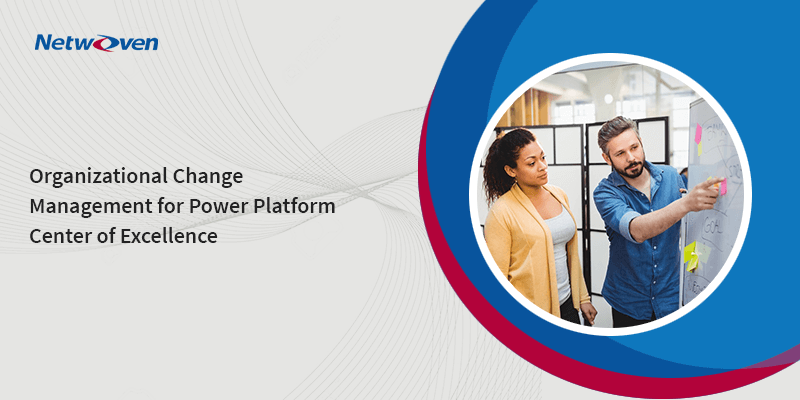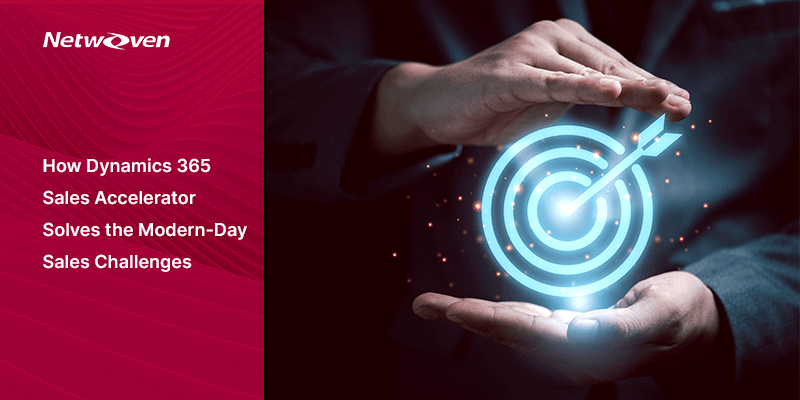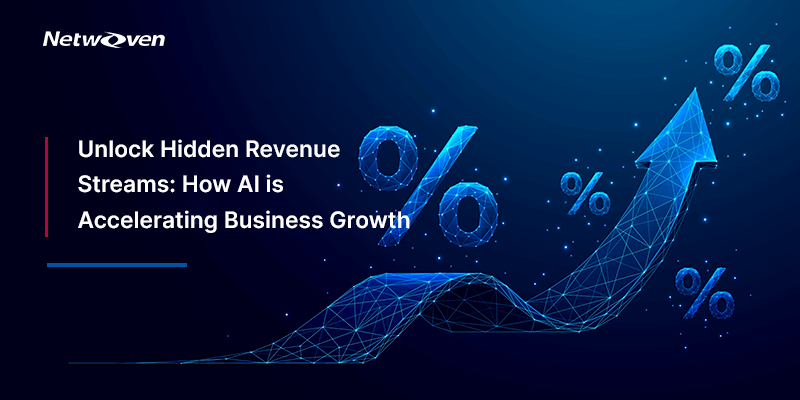Introduction:
One of the hardest aspects of establishing a Center of Excellence is reinforcement. This article talks primarily about Organizational Change Management (OCM) regarding Microsoft Center of Excellence on the Power Platform but applies genuinely to any Center of Excellence (methodology rollouts, process changes, new policies and procedures, new applications, etc.).
Change is good
Humans go through change at various speeds, shifting through various phases. Prosci has a well-established definition for the phases an individual or group of individuals go through during a change. The simple acronym is ADKAR – Awareness, Desire, Knowledge, Ability, Reinforcement. It is proven that the change being implemented has the highest ROI when most individuals are in the Ability phase.
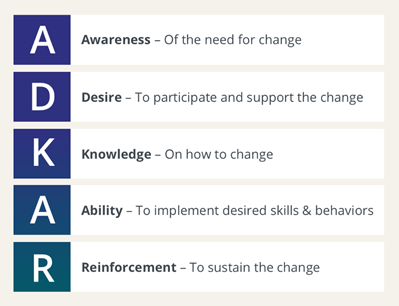
Image: ADKAR definition from www.prosci.com
Microsoft Power Platform Center of Excellence
Let us walk through a concrete example for the Microsoft Power Platform Center of Excellence. Your organization realizes the need for a centralized way to organize Apps, Flows, and Processes, and communicate to and with Makers and End Users.
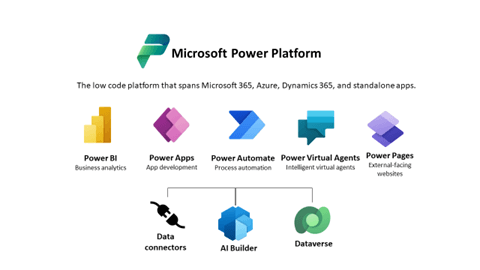
Image: what is the dataverse? https://docs.microsoft.com/en-us/power-apps/maker/data-platform/data-platform-intro
Step 1:
Self-organization– Admin group managing the Power Platform identifies areas that would benefit from change. Common examples are when End Users ask for the same automated process and they are not aware of the App a Maker has made. This is a wasted effort for the Users, the Makers, and the admin group as well.
Step 2:
Brainstorming and To-Be mapping are the next steps for any Center of Excellence. For Power Platform CoE, install the CoE starter kit, establish the Innovation Backlog and start to populate it, brainstorm Application Lifecycle Management, use of Azure DevOps vs help-desk tickets, centralized deployment schedule, coding standards such as error handling, required data restrictions or security considerations, licensing assignments and user departure processes (this is critical for user owned apps). What is the plan for release notes, feedback loops, patches, and updates? Consolidating the ‘new way’ might take some cycles, poking holes, and determining gaps.
Step 3:
Roll out the change strategy. Most organizations get to this point and establish some FAQs, or create a Team Site, or a SharePoint page with the latest updates. All of these are important, should be foundational, and required. On top of this, the Admins in the COE group need to remember that Developers (not in the CoE Tiger Team), Makers, and End Users will all go through changing to this new paradigm at different speeds. List out the personas and map them through a journey. Communicate to them in their language and direct them to the collateral established (such as the SharePoint page or FAQs).
Example:

- End Users: Mostly business users who are not keeping up with the latest Microsoft build information.
- Does not stay current with terminology such as “Power Platform,” “Dataverse,” or “Dynamics / D365”
- Leverages full Microsoft suite such as Office, SharePoint, Excel/Word, Teams, D365 Customer Engagement, and D365 Finance
- Gets frustrated when new builds are released without training or support since they are expected to not lose productivity

- Makers: Business users or low-code developers who understand the Microsoft landscape and want to contribute apps to their teams, departments, or organizational units.
- High achieving asset to the organization interested in solving repetitive tasks with simple automation
- Probably has poked around and created Apps IT does not know about
- Probably has a license (or two or three) that IT does not know about (such as LucidChart instead of Visio)
- They are typically well-liked since they help others with their automation needs – they are the productivity savers
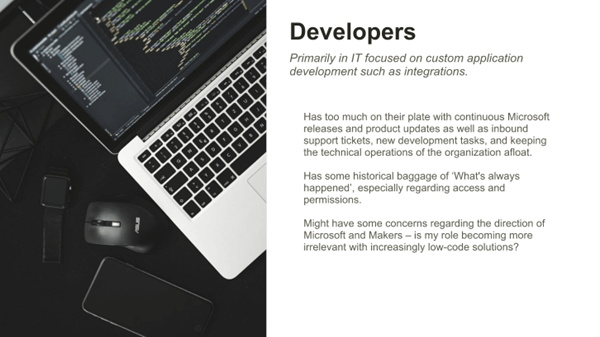
- Developers: Primarily in IT focused on custom application development such as integrations.
- Has too much on their plate with continuous Microsoft releases and product updates as well as inbound support tickets, new development tasks, and keeping the technical operations of the organization afloat.
- Has some historical baggage of ‘What’s always happened’, especially regarding access and permissions.
- Might have some concerns regarding the direction of Microsoft and Makers – is my role becoming more irrelevant with increasingly low-code solutions?
As you can see, there are 3 very distinct, quite different personas to communicate with and help get through the change a CoE can bring. Your messaging and content should be tailored to the appropriate audience persona. And remember, more communication is better than less.
Lastly, think about communication senders… the sad truth is that many organizations have the culture of ignoring the IT All-Company Email. Avoid that by having VP Business sponsors for your CoE. Ask them to help push your messaging.
We hope you found this blog useful in learning about the easy tools available for your Power Platform Center of Excellence (CoE) deployment. Please reach out to us so that we can put our decades of Power Platform and Organizational Change Management experience to work for your organization’s Digital Transformation journey.

